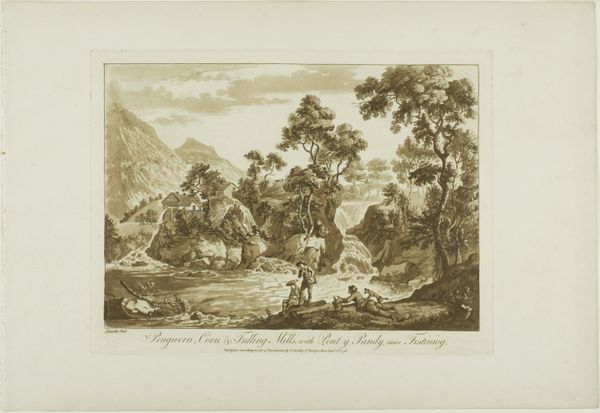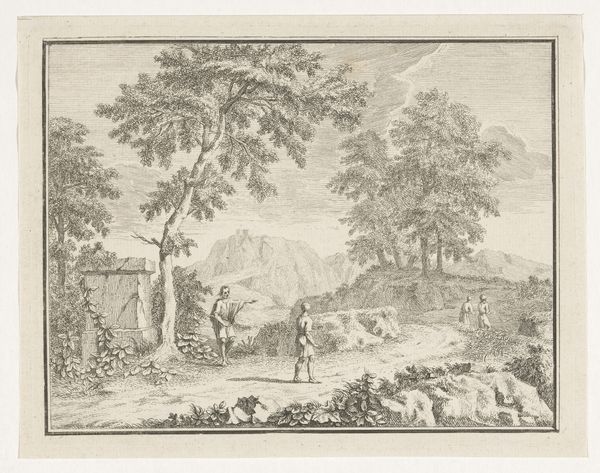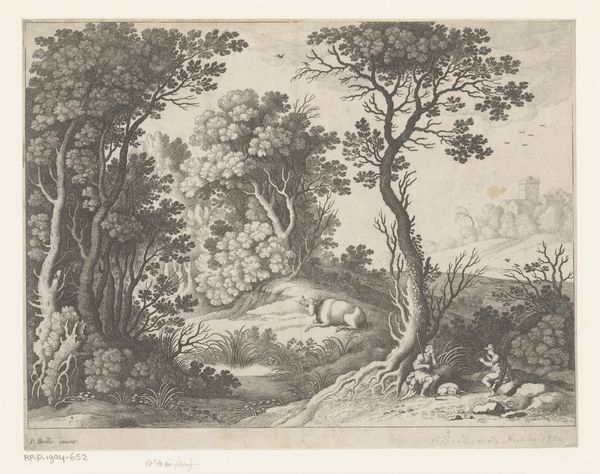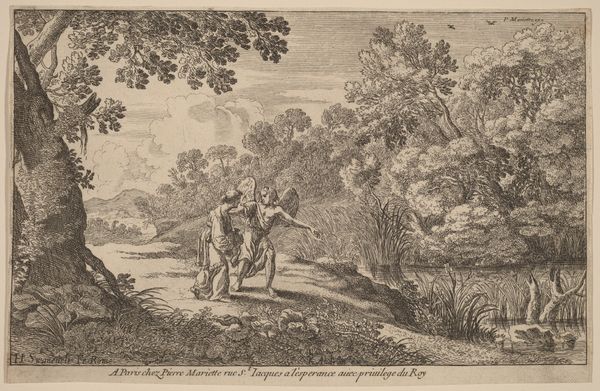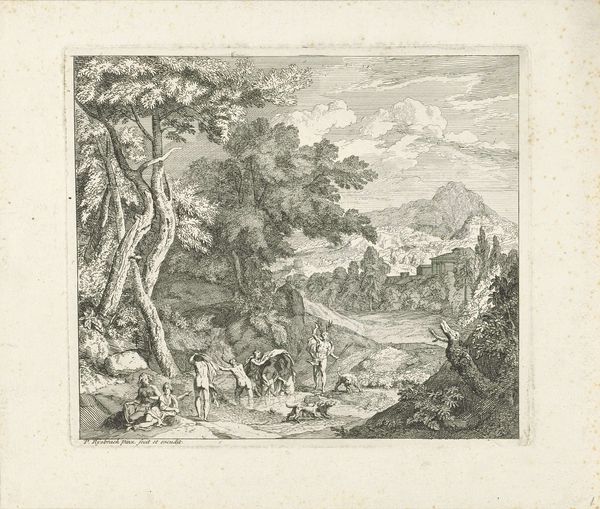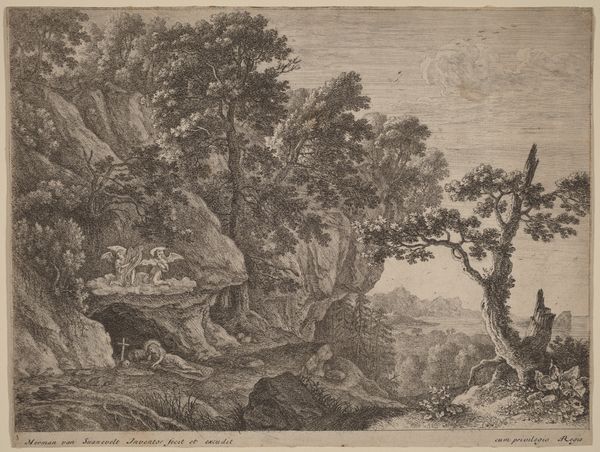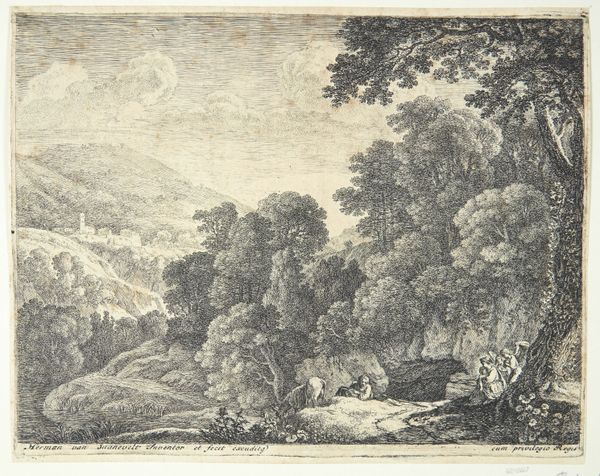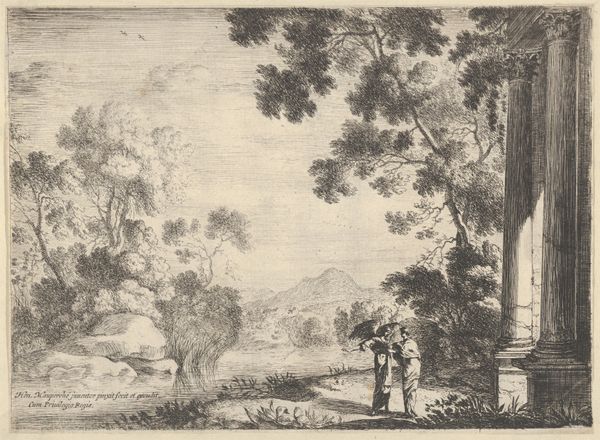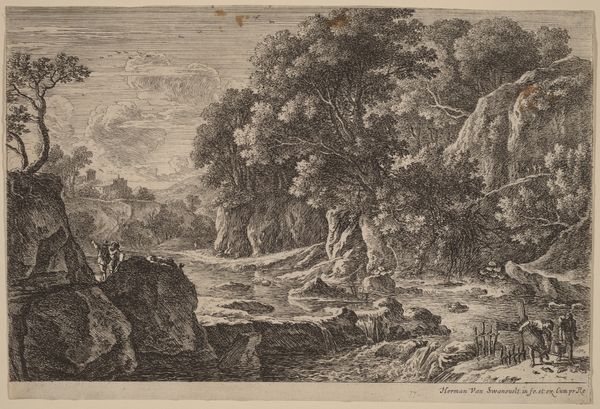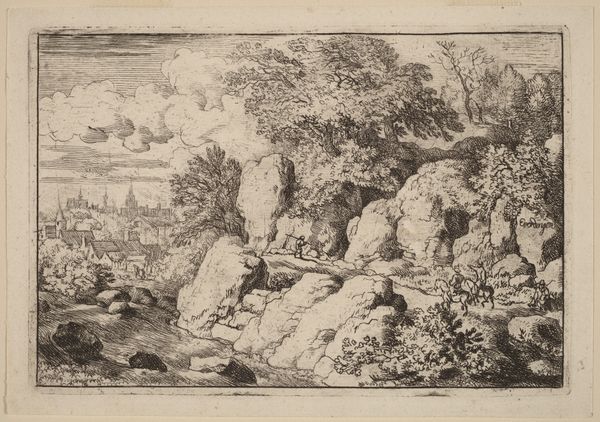
Dimensions: 127 × 179 mm (image); 152 × 197 mm (plate); 170 × 220 mm (sheet)
Copyright: Public Domain
Editor: This is Adrian Ludwig Richter's "Rocca di Mezzo," an etching from 1832. The stark contrast of light and shadow creates a really interesting atmosphere. What strikes you about this piece? Curator: What stands out is how Richter situates the figures within a potentially romanticized but undeniably political landscape. How does the artist portray the relationship between these people and their environment, and how does this representation engage with contemporary ideas about class and societal expectations? Editor: Well, there's a figure who looks like maybe a clergyman walking with a donkey, and some women resting by the trees. Curator: Exactly. We can consider how Richter is depicting the journey of labor set against an Italianate landscape – reflecting on perhaps religious tourism for some versus daily life for others. How does this intersect with burgeoning ideas about German nationalism at the time? The landscape almost becomes a stage for the presentation of societal roles and contrasts. Editor: That's interesting. So, the setting isn't just a backdrop, but a commentary on the social landscape. Curator: Precisely. Notice the contrast between the active traveller and the women, resting. Do we see a tension there in the positioning, with their gaze directed to the landscape versus at one another, speaking to individual agency? Editor: I do now. So, it’s about digging into how art is reflecting social tensions and lived experiences of different people. Curator: Precisely, it helps us deconstruct the relationship between the artwork and its time. Editor: That's really fascinating. I’ll never look at landscapes the same way again! Curator: Indeed! By looking closely, art can really speak volumes about the times it comes from.
Comments
No comments
Be the first to comment and join the conversation on the ultimate creative platform.
